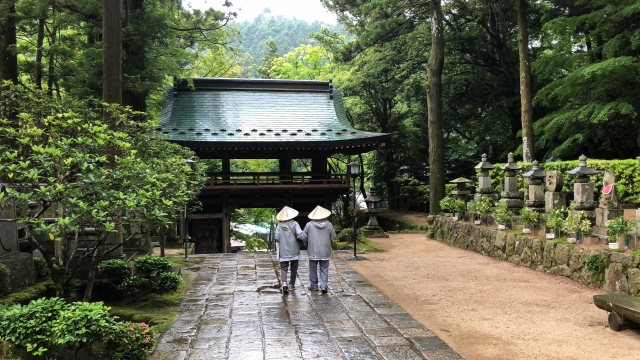Welcome to the spiritual heart of Japan. The Shikoku Pilgrimage, known in Japanese as ‘Ohenro’, is a fascinating journey through 88 Buddhist temples scattered across Shikoku Island. This comprehensive guide will help you navigate and enjoy this unique cultural and spiritual experience.
What is the Shikoku Pilgrimage?
The Shikoku Pilgrimage is a circular route spanning approximately 1,200 kilometers around Shikoku, the smallest of Japan’s four main islands. It connects 88 sacred temples, each representing a different aspect of Buddhist teachings. This journey, traditionally performed on foot, offers pilgrims a chance to seek spiritual enlightenment, enjoy the beauty of Shikoku’s nature, and experience the warm hospitality of locals.
Understanding Ohenro
‘Ohenro’, the Japanese term for the pilgrimage, refers both to the journey and the pilgrims who undertake it. Many pilgrims wear traditional white clothing, carry a walking stick and wear a conical hat for protection against the elements. They also carry a book called a nokyocho, where they collect red stamps and calligraphy from each temple as proof of their visit.
Joining the Ohenro: Do You Need to Visit All 88 Temples?
No, you don’t have to visit all 88 temples to participate in the Ohenro. Many people visit a selection of temples that appeal to them based on location, history, or spiritual significance. Every part of the journey is considered equally important, whether you visit one temple or all 88.
Experiencing the Shikoku Pilgrimage
Whether you’re seeking spiritual growth, historical insights, or a unique hiking adventure, the Shikoku Pilgrimage offers diverse experiences. Here are some ways to engage with and enjoy the journey:
- Walk or Cycle: The traditional way of completing the pilgrimage is on foot, but cycling is also a popular option. These methods allow you to fully appreciate the stunning Shikoku scenery.
- Public Transport: For those with limited time, taking a bus tour or using public transportation to visit select temples is a convenient alternative.
- Visit Local Shops and Restaurants: Many local businesses along the route offer pilgrim-friendly services. Trying local delicacies and interacting with locals can enhance your experience.
- Collect Goshuin: Collecting goshuin (temple stamps) in your nokyocho at each temple adds a tangible aspect to your spiritual journey.
Immerse Yourself in Nature and History
Beyond the spiritual aspect, the Shikoku Pilgrimage takes you through the rich nature and history of Shikoku Island. Expect a diverse array of landscapes, from lush mountains and tranquil rivers to rustic villages and bustling towns. Each temple has its own story to tell, offering insights into Japan’s history and Buddhist tradition.
Noteworthy Temples on the Shikoku Pilgrimage
While each of the 88 temples holds significance, some are particularly renowned for their historical importance, architectural beauty, or spectacular settings. Here are a few to consider:
| Temple Number | Temple Name | Location | Highlights |
|---|---|---|---|
| 1 | Ryozenji | Naruto, Tokushima | The starting point of the pilgrimage, Ryozenji features a beautiful pond garden and a museum dedicated to the Shikoku Pilgrimage. |
| 31 | Chikurinji | Kochi City, Kochi | Located on Godaisan Mountain, Chikurinji is known for its five-story pagoda and stunning views of Kochi City. |
| 45 | Iwayaji | Kamiyama, Tokushima | Nestled in the rocky cliffs of Mt. Nyotai, Iwayaji is an impressive sight and offers an authentic spiritual experience. |
| 88 | Okuboji | Sanuki, Kagawa | Known as the ‘Temple of Completion’, Okuboji is the final temple on the pilgrimage. It’s tradition for pilgrims to leave their walking sticks here as a sign of completing their journey. |
Embrace the Ohenro Spirit
While the physical journey of the Shikoku Pilgrimage can be challenging, many pilgrims find the spiritual rewards to be profound. As you traverse the beautiful landscapes of Shikoku and visit the ancient temples, you’re invited to embrace the spirit of Ohenro – a journey of self-discovery, reflection, and connection with nature.
Final Thoughts
The Shikoku Pilgrimage is a unique cultural experience, steeped in history and spiritual significance. Whether you’re a devout Buddhist, a lover of Japanese culture, or simply an adventurous traveler, the Ohenro offers an enriching and inspiring journey.



comment